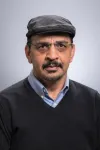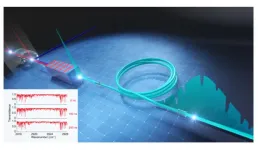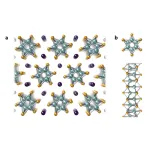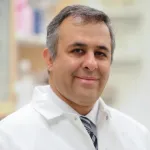(Press-News.org) University of Houston researchers are developing a program to teach small-scale, underserved and limited resources (SULR) farmers how to improve their crop production by reducing greenhouse gas emissions and increasing carbon removal.
The work is supported by a nearly $5 million grant from the US Department of Agriculture (USDA) Natural Resources Conservation Service. Researchers will partner with colleagues from Prairie View A&M University, Texas A&M University and Michigan Aerospace Corp. to study how best to implement a Climate-Smart Sustainability Certificate program for SULR farmers. UH research projects will receive almost $700,000 during the funding period.
“These farmers are the most disadvantaged in the current agricultural system and most vulnerable to the negative impacts of climate change,” said Abdul Latif Khan, assistant professor in the UH College of Technology’s Department of Engineering Technology.
The study will allow the USDA to track the success of Climate-Smart farming practices. The team will quantify the benefits and costs of growing specialty crops under precision technology-assisted climate-smart practices and compare them with conventional production practices. In addition, the study will provide information on sustainable farming practices.
“Climate changes hinder the desired natural plant productivity and threaten food security,” said Venkatesh Balan, associate professor of engineering technology at UH. “For example, higher temperature stress will significantly limit plant growth, biomass and yield. It also influences soil health and moisture flux.”
According to Khan, estimations are that an increase of 3-4 degrees (Celsius) would reduce plant productivity by 15%-35% before the end of the 21st century.
Through this project, the researchers from partnering institutions will collect data on three central Climate Smart interventions that sequesters carbon dioxide – silicon, algae and rock powder. In addition, SULR farmers will learn practices like adding rock dust to the soil to speed up the chemical reactions that sequester carbon.
The project will also focus on existing practices that protect the soil from erosion, pests, weeds and diseases, while increasing soil fertility and reducing greenhouse gas emissions. When the harvest is over, crop cover will be grown to protect the soil from erosion. In addition, farmers will employ new water management practices and reduce soil tilling.
“The results of these interventions and strategies will educate SURL farmers and encourage them to implement climate-smart production practices on working lands,” said Ram Ray of Prairie View A&M University, a partner in the project.
“We will measure, monitor, report and verify the carbon and greenhouse gas reduction benefits,” added Xiaonan Shan, assistant professor of electrical engineering at UH Cullen College of Engineering.
The team will share results with farmers to provide data-driven evidence in support of adopting climate-smart practices.
“Farmers will be given incentives at a specified rate for practicing interventions during the duration of the project,” Ray said.
The team believes farmers will embrace Climate-Smart sustainability practices when they see the increased crop production that results from their efforts.
—Dennis Spellman
END
Researchers study how underserved farmers can improve crop, impact climate change
2023-03-04
ELSE PRESS RELEASES FROM THIS DATE:
Connect to protect
2023-03-04
On Mar. 2, the first evening of the Our Ocean Conference in Panama City, Panama, a distinguished group hosted by the Smithsonian Tropical Research Institute (STRI), the Bezos Earth Fund, Re:wild and Pew Bertarelli Ocean Legacy gathered at Panama’s BioMuseo to celebrate their commitment to conserve a sustainable and resilient Eastern Tropical Pacific Ocean (ETP).
The event recognized significant contributions by the public sector—especially the governments of Panama, Colombia, Costa Rica, and Ecuador; the private sector; civil society, the scientific sector; together with generous philanthropists, ...
Sea level rise poses particular risk for Asian megacities
2023-03-04
Sea level rise this century may disproportionately affect certain Asian megacities as well as western tropical Pacific islands and the western Indian Ocean, according to new research that looks at the effects of natural sea level fluctuations on the projected rise due to climate change.
The study, led by scientists at the French National Center for Scientific Research (CNRS) and University of La Rochelle in France and co-authored by a scientist at the National Center for Atmospheric Research (NCAR), mapped sea level hotspots around the globe. The research team identified several ...
Rhythmic eating pattern preserves fruit fly muscle function under obese conditions
2023-03-04
BIRMINGHAM, Ala. – Obese fruit flies are the experimental subjects in a Nature Communications study of the causes of muscle function decline due to obesity. In humans, skeletal muscle plays a crucial role in metabolism, and muscle dysfunction due to human obesity can lead to insulin resistance and reduced energy levels.
Interestingly, studies in various animal models have shown that time-restricted feeding — a natural non-pharmaceutical intervention — protects against obesity, aging and circadian disruption in peripheral tissues such as skeletal muscle. However, the mechanisms underlying those ...
New tool for organ repair: Curvature of the environment
2023-03-04
A ball, a saddle, or a flat plate. The curvature of biomaterials inhibits or stimulates bone cells to make new tissue. This is what TU Delft engineers show in research published on Friday, 3rd of March in Nature Communications. This study of geometries could be an important step in research into repairing damaged tissues.
Living cells can perceive and respond to the geometry of their environment. ‘Cells sense and respond to the geometry of the surfaces they are exposed to. Depending on their curvature, surfaces can either encourage cells to create new tissue or prevent them from doing so,’ says Amir Zadpoor, ...
Military veterans face increased risk of HPV-related cancer due to low vaccination rates
2023-03-04
Human papillomavirus (HPV) vaccination rates among eligible veterans and active-duty military are half that of their civilian peers, putting them at greater risk of HPV-related cancers. That’s according to a new study published today in JAMA Oncology that provides the first national estimate of HPV vaccination rates in this population.
“Our findings should serve as a call to action to the Department of Defense and the Veterans Health Administration to advocate that their service members get vaccinated,” said senior author José P. Zevallos, ...
Innovative technology shows great promise against certain head and neck cancers
2023-03-04
Over the past decade, human papillomavirus (HPV) has increasingly been identified as a significant cause of certain head and neck cancers – for example, evidence suggests it causes 70% of oropharyngeal cancers in the United States.
Further, over the past three decades, incidence of HPV-driven cancers has increased substantially worldwide and in the U.S. While there are well-established screening tools, as well as vaccines, for HPV-driven cancers such as cervical cancer, there are fewer resources for HPV-driven head and neck cancers. As a result, researchers are working with a sense of urgency to develop innovative ...
Study shows those infected with COVID in the first wave in 2020 were 40% less likely than those who were not to get COVID-19 during the first six months of Omicron activity
2023-03-04
**Note: the release below is a special early release from the European Congress of Clinical Microbiology & Infectious Diseases (ECCMID 2023, Copenhagen, 15-18 April). Please credit the conference if you use this story**
Compared to adults who did not have COVID in the first wave (March to September 2020), adults infected with COVID-19 in that first wave were 40% less likely to become infected during the first six months of Omicron activity (December 2021 to May 2022), concludes a new Canadian study to be presented at this year’s European Congress of Clinical Microbiology & Infectious Diseases (ECCMID) in Copenhagen, Denmark (15-18 April). The study was led ...
Detecting the molecular vibration information faster and better by “stretching” time
2023-03-04
Infrared spectroscopy is a non-invasive tool to identify unknown samples and known chemical substances. It is based on how different molecules interact with infrared light. You may have seen this tool at airports, where they screen for illicit drugs. The technique has many applications: liquid biopsy, environmental gas monitoring, contaminant detection, forensic analyses, exoplanet search, etc. But the traditional infrared spectroscopy methods provide low (temporal) resolution data. They are usually only applied for static samples because spectral data acquisition is a slow process. Detecting fast-changing phenomena ...
Scientists thread rows of metal atoms into nanofiber bundles
2023-03-04
Tokyo, Japan – Researchers from Tokyo Metropolitan University have successfully threaded atoms of indium metal in between individual fibers in bundles of transition metal chalcogenide nanofibers. By steeping the bundles in indium gas, rows of atoms were able to make their way in between the fibers to create a unique nanostructure via intercalation. Through simulations and resistivity measurements, individual bundles were shown to have metallic properties, paving the way for application as flexible nanowires in nanocircuitry.
Atomic wires of transition metal chalcogenides (TMCs) ...
Intellifoods Labs, LLC strengthens partnership with Mason scientists to reduce food bacterial contamination detection time
2023-03-03
Mason Associate Professor of Infectious Diseases and Microbiology, Ramin M. Hakami has received a total of $35,000 in grants from Intellifoods Labs, LLC to continue examining methods to reduce the time to detect the presence of bacteria in food samples.
Numbers and types of foodborne disease occurrences have increased over time and are a major global public health concern. Hakami and his team seek to reduce the time to identify both live and dead bacteria in food samples using fluorescence detection. The team aims to optimize the detection ...




